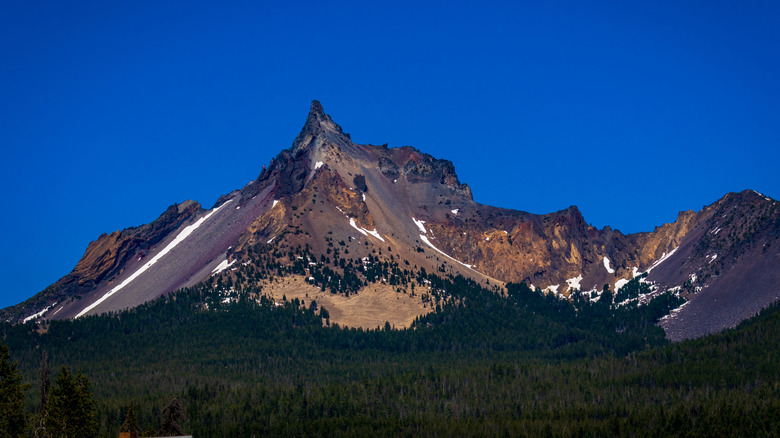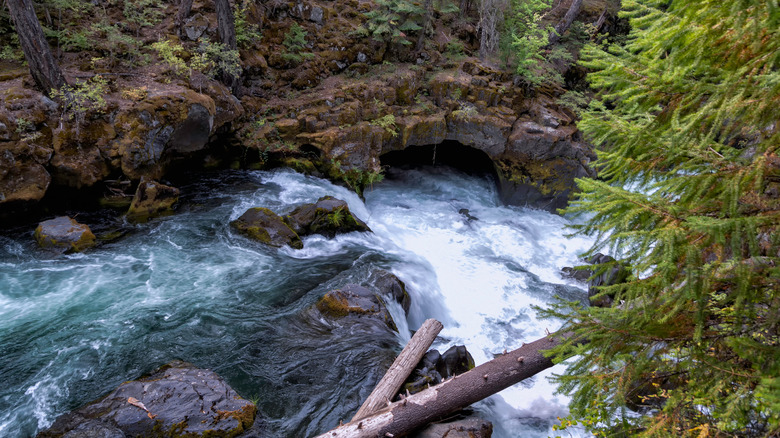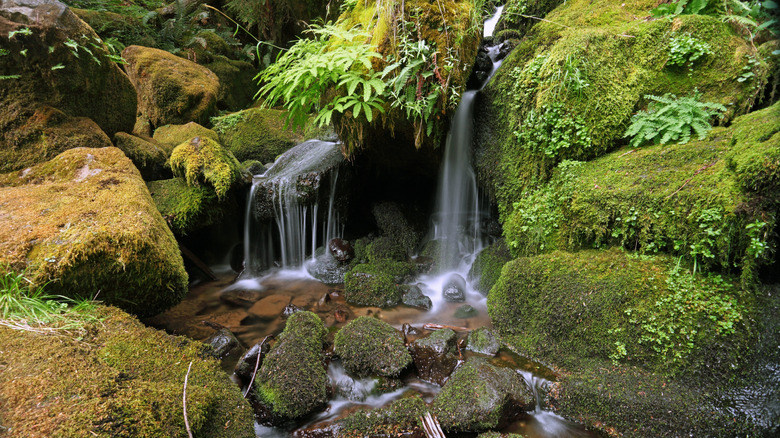Oregon's 'Highway Of Waterfalls' Is A Breathtakingly Scenic Road Trip Through A Magical River Valley
As a state known for its abundance of scenic beauty and natural landscapes, Oregon is atop many a travel bucket list. One of the best ways to explore all it has to offer is to take a road trip along one of the Beaver State's 44 scenic byways. These include six national scenic byways such as the Cascade Lakes Scenic Byway, a byway through the heart of Central Oregon offering dazzling lakes, alpine forests, and outdoor fun. Oregon is also famous for its waterfalls. Estimates suggest there are over 1,635 waterfalls, with 238 being named, within the state. This includes Tumalo Falls, one of America's most enchanting waterfalls and an easily accessible Oregon gem. A combination of breathtaking scenery and stunning waterfalls can also be experienced via road trip along Southern Oregon's Rogue-Umpqua Scenic Byway, another of the state's national scenic routes.
This 172-mile long byway earned its designation as a national scenic byway in 2002 from the National Scenic Byways Program. The byway's name comes from the ever-present Rogue and Umpqua Rivers, two of the state's nationally recognized Wild and Scenic Rivers, providing opportunities for outdoor recreation. With over 15 waterfalls along the Rogue-Umpqua Byway, it's also known by its nickname as the "Highway of Waterfalls." If that weren't enough, the route also winds through the lush green Umpqua National Forest, passes majestic Cascade Mountain range peaks, and travels along the shores of the sparkling Diamond Lake. The natural wonders of the Rogue Gorge and Natural Bridge are also gems along this route, which makes for a great road trip adventure for travelers of all ages. You'll for sure want to keep your camera handy.
Things to see along Rogue-Umpqua Scenic Byway
The byway journey recommended by the Travel Oregon website begins just off the Interstate-5 corridor in the town of Roseburg and travels along Oregon Route 62, where it concludes in Gold Hill, which is about a 20-minute drive from the "Heart of the Rogue Valley," and the artsy city of Medford. The Travel Medford website highlights the route starting from Medford and heading northwest. It takes an estimated five to seven hours to complete the Scenic Byway, with prime visit months from June to October, since winter months in Oregon can yield hazardous and unpredictable road conditions.
History buffs should visit the Douglas County Museum for a closer look at the region's past such as Native American relics, logging machinery, photographs, and natural history. Head north of Roseburg for the Winchester Dam, constructed in the late 1800s and listed on the National Register of Historic Places. As you venture along the North Umpqua River, near the town of Glide, you can view Colliding Rivers, where the North Umpqua and Little River converge. Hiking enthusiasts will have ample options on the 79-mile-long North Umpqua Trail, with 13 trailheads leading to and from it.
Two natural wonders as you follow the Rogue River Byway section include Rogue Gorge, which is 25 feet wide and 40 feet deep and was formed by the river passing through hardened lava tubes, and Natural Bridge. Rogue Gorge can be accessed off the highway via a quarter-mile paved path to a viewpoint, or by a slightly longer hike to the Natural Bridge interpretive site. You can also access this land bridge by driving to the Natural Bridge Campground.
Waterfalls and recreational opportunities along the Rogue-Umpqua Scenic Byway
The Rogue-Umpqua Scenic Byway will not disappoint those chasing waterfalls and seeking outdoor recreation activities. Diamond Lake is the road trip's all-season outdoor mecca, featuring a backdrop of Mount Thielsen and Mount Bailey, and has a paved cycling and walking path. Summer and fall are prime months for boating, swimming, and horseback riding. It then turns into a winter paradise for skiing, snowboarding, and snowmobiling. Both rivers are a fishing haven, known for an abundance of trout and other species. The Rock Creek Fish Hatchery plays a major role in this effort, and you can take a self-guided tour where they produce fish for release.
However, it's the area's waterfalls that are the main must-see attraction, with most reachable by short hikes from a parking lot. The route's tallest is 292-foot Watson Falls, which descends into the Umpqua National Forest. Doing the short one-mile loop hike is a must, as you can see the falls from several different angles and catch a little spray. Toketee Falls is famous for its 113-foot plunge into a natural pool, where swimming is possible if you can brave chilly temperatures. Closer to Medford, you'll find a two-for-one stop at the 173-foot Mill Creek Falls and the 242-foot Barr Creek Falls, which can be accessed on the same trail with multiple viewpoints. Nearby is Pearsony Falls, at 150 feet high, accessible along a quarter-mile trail, and uniquely photo-worthy due to its multiple tiers and lush vegetation. After a full day of adventure, you can stop in the Valley's wine region, considered one of the under-the-radar wine regions deserving of Napa hype.


